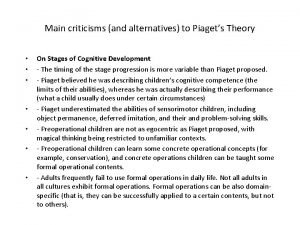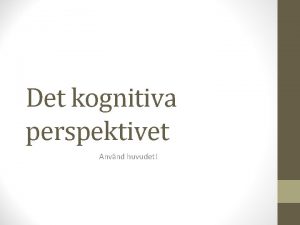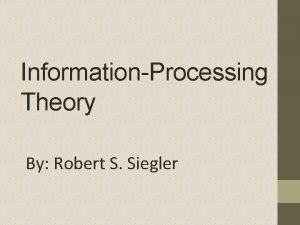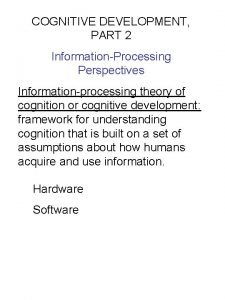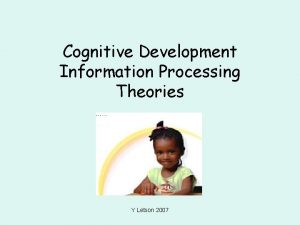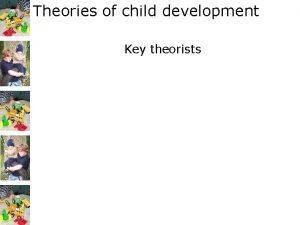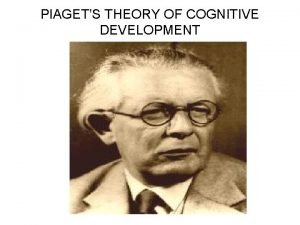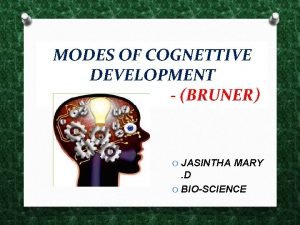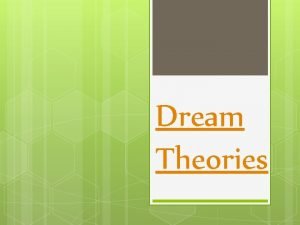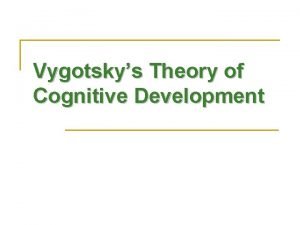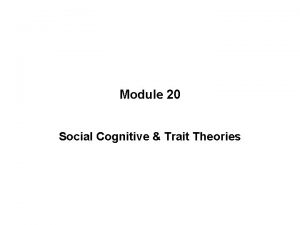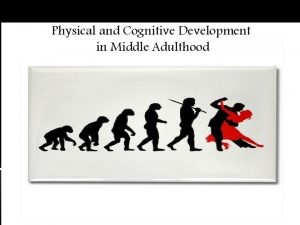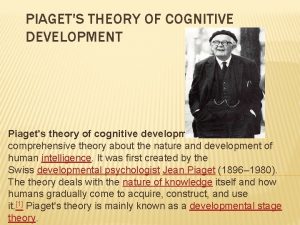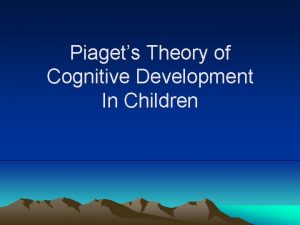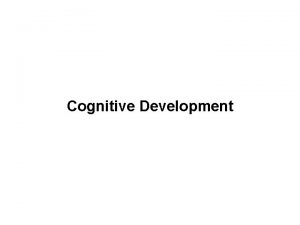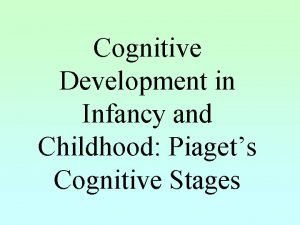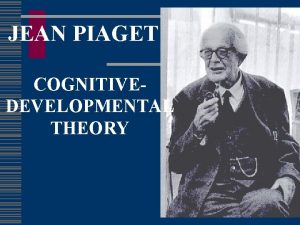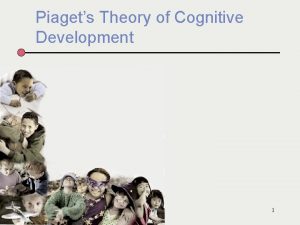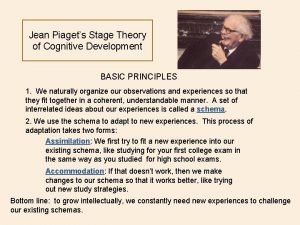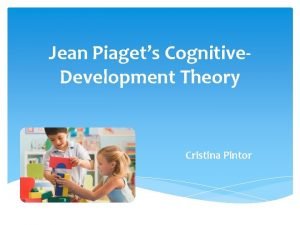Piagets Theory of Cognitive Development How it is


















- Slides: 18

Piaget’s Theory of Cognitive Development How it is the Structure and Function of Cognition Unfolds

How it is the Structure and Function of Cognition Unfolds • 1. Born in Switzerland. • 2. Worked with some “heavyweights” in France. • 3. Concerned with manipulative behavior of children-- how they come to know things. • 4. Developed an inductively built theory. • 5. His influence here in the U. S.

Basic Elements to A Theory is Made Up of Component Parts Assumptions The “givens of a theory accepted w/o proof Concepts The elements on which theory is built Structure What theory “looks” like when it is graphically illustrated

Assumptions of Piaget’s Theory • Humans are biological organisms made up of reflexes and drives. • Humans are not passive in their development. • Humans a combination of genetic makeup and environmental influences. • Mental growth consists of two processes: (a) development and (b) learning

Structure and Function of Cognition: Explanatory Concepts • Schemata-- refers to cognitive structures. • Organization-- refers to the way schemata are organized and set up. • Adaptation-- refers to the invariant process of change in schemata. • Equilibrium-- refers to the cognitive balance that humans strive for through out development

The Structure of Cognition

Function of Cognition Organize Schemata Adapt Schemata Assimilation Accomodation

Piaget’s theory is a Stage Theory of Cognitive Development Formal Operational Period Concrete Operational Period Pre-operational Period Sensorimotor Period

Plane of Thought Formal Operational Period Concrete Operational Period Pre-operational Period Sensorimotor Period Plane of Action

Sensorimotor Period • • • Substage 1: Substage 2: Substage 3: Substage 4: Substage 5: Substage 6: Reflexive or S-R Behavior Primary Circular Reactions Secondary Circular Reactions Coordination of Secondary Schemata Tertiary Circular Reactions New means through Mental Combinations

Major Accomplishments of the Sensorimotor Period

Preoperational Period • Divided into 2 subperiods: The Preconceptual (2 -4) and The Intuitive (4 -7) • Major Characteristic: Symbolic Function evidenced by language, imaginative play, increase in deferred imitation. • Acceleration of language is regarded as an outcome of the development of symbolization, rather than the inverse.

Preoperational Thought is Characterized by the Following • Egocentrism • Unstable • Centration Equilibrium • State • Irreversibility Fixation • Transdusciv e Reasoning

Piaget’s Demonstration of Preoperational Thinking Errors: Conservation Tasks • Conservation of Volume • Conservation of Mass • Conservation of Number • Conservation of Length

Conservation of Volume

Conservation of Volume


 Criticisms of piagets theory
Criticisms of piagets theory Kognitivt schema
Kognitivt schema Jerome bruner cognitive theory
Jerome bruner cognitive theory Siegler theory
Siegler theory Information processing theory of cognitive development
Information processing theory of cognitive development Information processing theory of cognitive development
Information processing theory of cognitive development Gesell theory
Gesell theory Conclusion of piaget's theory
Conclusion of piaget's theory Child development: an active learning approach 4th edition
Child development: an active learning approach 4th edition Piaget's preoperational stage
Piaget's preoperational stage Bruner's theory of cognitive development
Bruner's theory of cognitive development Activation-synthesis theory dreams
Activation-synthesis theory dreams Lev semenovich vygotsky theory
Lev semenovich vygotsky theory Jean piaget theory
Jean piaget theory Cognitive and non cognitive religious language
Cognitive and non cognitive religious language Trait theory vs social cognitive theory
Trait theory vs social cognitive theory Cognitive development for middle adulthood
Cognitive development for middle adulthood Physical and cognitive development in early adulthood
Physical and cognitive development in early adulthood Late childhood cognitive development
Late childhood cognitive development
